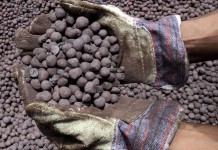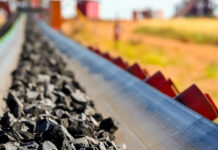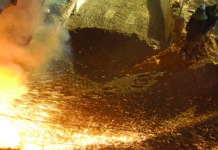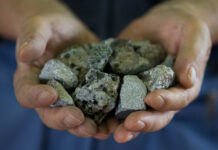
[miningmx.com] — A DRAFT summary of the ANC discussion document on
the state’s involvement in mining suggests a bigger share for government in Kumba
Iron Ore; necessary to facilitate a reduction in local steel prices.
According to the document iron ore should be classified as a strategic mineral, and
mining licences should obligate local sales to steel producers at a “cost plus’ model.
“Steel is by far the most important raw material into manufacturing which is probably
the only sector capable of absorbing our massive number of unemployed,’ read the
document.
“Most of the countries surveyed had competitive domestic steel prices due to their
size [Brazil, China] or membership of trading blocs [EU] and most have or have had
state steel companies.
“We need to ensure that steel is supplied into our economy at competitive [export
parity pricing] prices. This could create thousands of downstream jobs.’
The report said that local customers of iron ore producers, for instance ArcelorMittal
South Africa (Amsa), should also be forced to apply export parity prices on their
steel products.
“The cost of increasing the state holding in Kumba from around 13% to more than
50% would be prohibitive [about R15bn], and may require a constitutional
amendment to force Anglo American to reduce its share to below 50%, “in the public
interest.’’
The discussion document’s proposals came after government said in 2010 it would
seek a deal that would allow Amsa and other steel producers to source 21.4% of
Kumba’s Sishen mine’s ore output at cost plus 3%. This was subject to a steel-
pricing model that should result in domestic steel prices being no higher than the
lowest quartile of global prices.
The ANC discussion document also urged the establishment of a new steel operator
that would sell steel into the local market at export parity prices, and thereby “force
Amsa to drop its prices’.
“This would be best done by locating iron resources that could be concessioned
against the establishment of such a plant,’ read the document. “Both Brazil and India
have used access to iron ore to force international customers to locate steel plants
in their countries, to beneficiate a proportion of the ore allocated, into steel before
export.’
The document said Kumba’s operations at Kathu (the Sishen mine) produce a
significant fraction of iron-ore fines that are currently dumped, estimated at 200 to
400 million tonnes.
“After upgrading these could be transported more economically to the coast by slurry
pipeline using water in the Gariep Dam currently allocated to the Nelson Mandela
Metro [NMM], for a local steel plant and for ore exports as well as water supply to
the NMM.’
The document points to Brazil’s Samarco iron ore slurry pipeline that carries around
20 million tonnes per annum (Mtpa) over 400 km to the coast where the fines are
pelletised.
“In this regard, [ministries] should be tasked with assessing the viability of slurrying
at least 25 Mtpa of fines to Ngqura [Eastern Cape], including persuading the iron ore
producers to cede the iron ore fines from the waste dumps and current arisings in
exchange for rail export capacity.’











